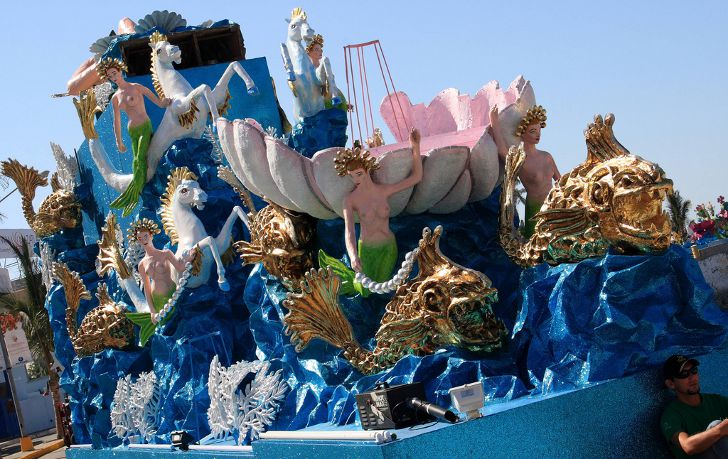The Mazatlan Carnival is the oldest modern Carnival celebration in Mexico. It was officially inaugurated in 1898. Before that, pre-Lenten festivities in Mazatlan involved a mock flour battle between two rival groups. Local authorities decided to replace the Carnival of Flour with a more orderly celebration, focusing on a colorful parade with bright costumes. That’s how the modern Carnival of Confetti and Streamers was born.
The Carnival officially opens on the Thursday before Ash Wednesday, but the main festivities begin on Friday and culminate on Shrove Tuesday (Mardi Gras). One of the central events of the Mazatlan Carnival is the crowning of the Queen and King of the Carnival. Another traditional character involved in the festivities is Rey Feo (Ugly King).
The Carnival of Mazaltan is more family-oriented than the Carnival in Rio de Janeiro and more tranquil than Mardi Gras in New Orleans, but it still features a lot of festive events. Its program includes two parades, two food festivals, street parties with live music, masquerade balls, and concerts. The preferred style of music is banda, a brass-based form of traditional Mexican music. But other folk music genres such as mariachi or onda grupera are also played.
The Carnival has two major parades, the first is held on Carnival Sunday and the second takes place on Mardi Gras. The parades features superbly decorated floats, dance troupes, folk groups, and even Mexican celebrities. The Sunday parade lasts for about three hours and attracts spectators from all over Mexico.
The final event of the Mazatlan Carnival is the burning of bad mood. The bad mood is represented by an effigy depicting a disliked public person (politician, celebrity) or sometimes an event, idea, or social problem. For example, in 2013 the effigy of influenza was burned. The burning is followed by the famous Naval Combat that depicts the battle against French vessels seeking to land at the port of Mazatlan.

Photo: Frank Kovalchek




